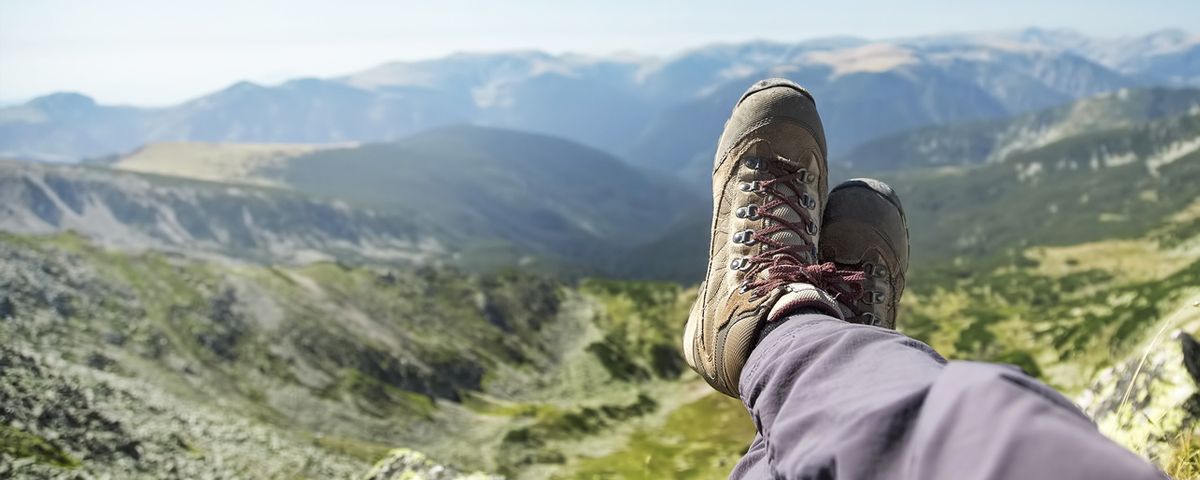
Good quality walking boots are absolutely essential for every walker. The rough terrain out in the hills is a minefield for ankle and knee injuries, which can be caused by twisting or rolling the ankle or knee. Another important reason to wear walking boots, and one that many people forget, is that the thick soles help to absorb the shock of impact of your feet on the ground.It is always best to buy brand new walking boots as they shape themselves to your feet, so borrowed or second-hand boots will pinch and rub.
There are several things you should look for in a pair of walking boots:
Always try your boots on with walking socks: going without can change the fit by a whole size! Wear the boots for a while in-store to get an accurate impression of how they feel before you buy. Many outdoor shops have synthetic terrain for you to test boots in a realistic setting.The boots should feel snug, and it should not be possible for the foot to slide or slip out. The laces should be tied correctly and firmly to further prevent the ankle from sliding.As with all shoes, brand new walking boots will rub, so wear them around the house to break them in before your walk.
Your socks will make a huge difference to the comfort and enjoyment of your walk. There are several things to look out for when choosing walking socks:
Most blisters can be prevented with good walking boots and socks, but they are to some degree an inevitability of walking. Luckily, there are simple things you can do to minimise the discomfort of blisters:
Take care of your feet and your feet will take care of you. Good boots, socks and blister packs will help you to avoid injury and improve the comfort and enjoyment of your walk, wherever it takes you.This post was written by Christopher Knowles
Sign up to receive the latest information on World Walks